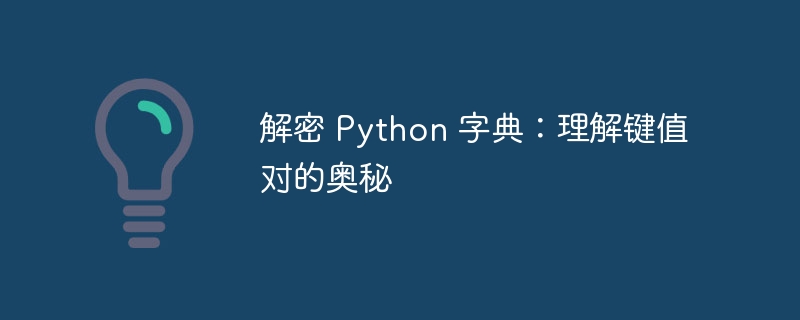

python A dictionary is a powerful data structure used to store key-value pairs. Dictionaries are unordered, which means the order of key-value pairs does not matter. Keys in a dictionary are unique, which means that a key can only correspond to one value. The values in a dictionary can be any type of data, including lists, tuples, dictionaries, etc.
Create Dictionary
To create a dictionary, you can use two methods. The first way is to use curly braces {} and separate the key from the value with a colon :. For example:
1 |
|
The second method is to use the dict() function. The dict() function accepts an iterable object as argument and converts it into a dictionary. For example:
1 |
|
Accessing elements in the dictionary
To access an element in a dictionary, you can use the key as an index . For example:
1 2 3 |
|
You can also use the get() method to access elements in the dictionary. The get() method accepts two parameters: key and default value. If the key exists, the value corresponding to the key is returned; if the key does not exist, the default value is returned. For example:
1 2 3 |
|
Add and delete elements in the dictionary
To add elements to the dictionary, you can use the [] operator or the update() method. The [] operator accepts two parameters: key and value. The update() method accepts an iterable object as a parameter and adds the key-value pairs in the iterable object to the dictionary. For example:
1 2 |
|
To delete elements from the dictionary, you can use the del keyword or the pop() method. The del keyword accepts a key as a parameter and deletes the value corresponding to the key from the dictionary. The pop() method accepts two parameters: key and default value. If the key exists, the value corresponding to the key is returned and removed from the dictionary; if the key does not exist, the default value is returned. For example:
1 2 |
|
Traverse the dictionary
To traverse the dictionary, you can use a for loop. The for loop iterates through all key-value pairs in the dictionary. For example:
1 2 |
|
You can also use the keys() and values() methods to traverse the dictionary. The keys() method returns a list of all keys in the dictionary, and the values() method returns all values in the dictionary
The above is the detailed content of Decrypting Python Dictionaries: Understanding the Secrets of Key-Value Pairs. For more information, please follow other related articles on the PHP Chinese website!




